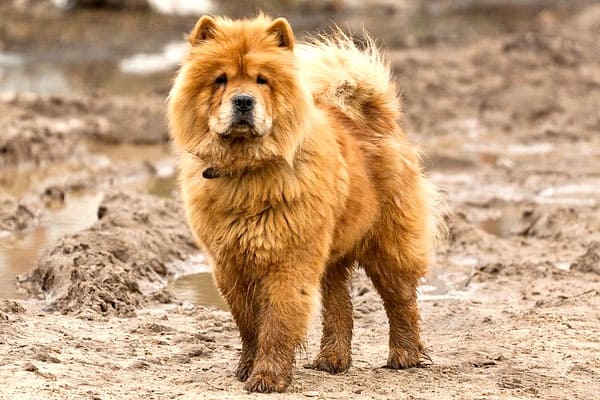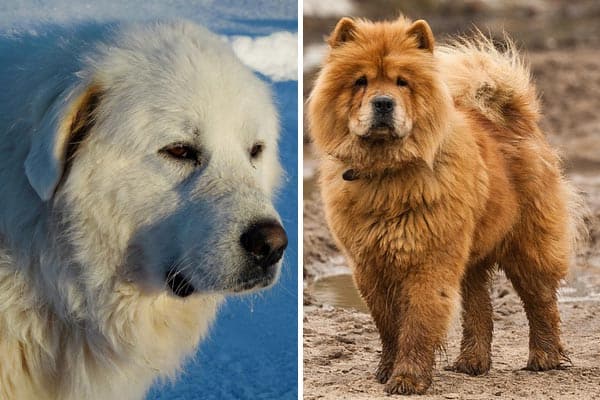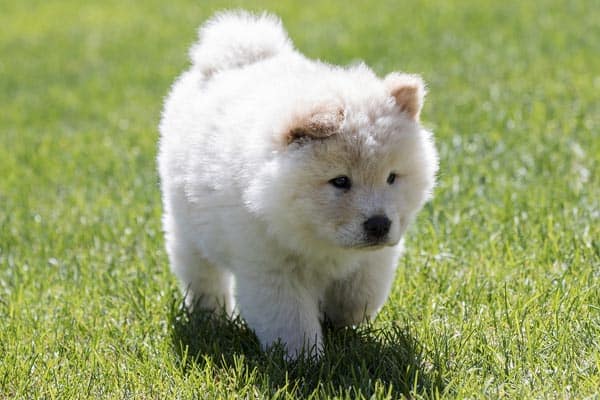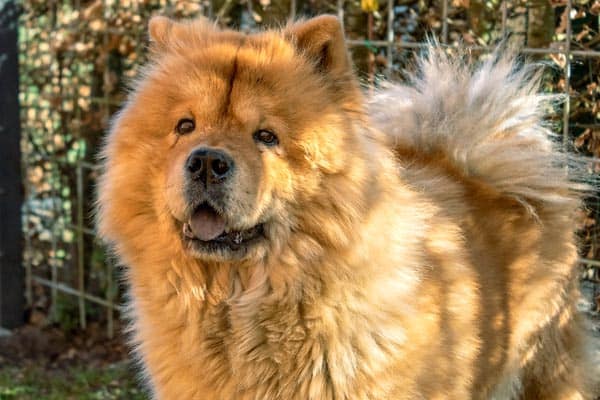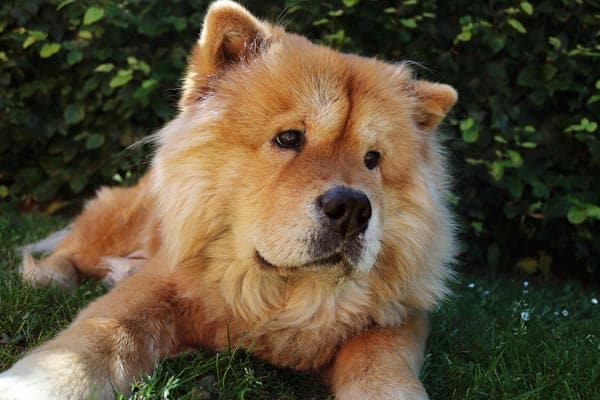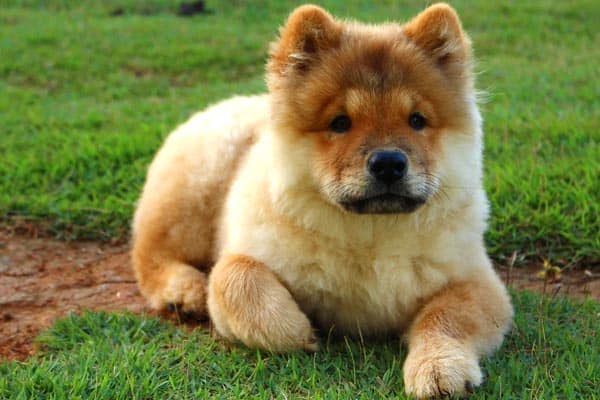Are Chow Chows Good Apartment Dogs: Why These Dogs Do Well in Small Spaces
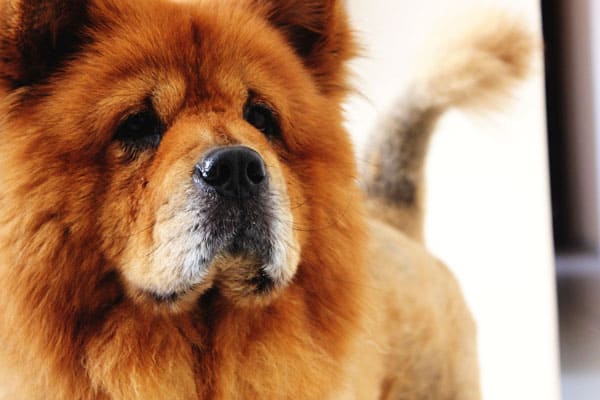
There is nothing normal about the Chow Chow dog breed. For starters, the Chow Chow may be one of the most ancient of all dog breeds in the modern world.
Also, Chow Chows can often appear to be a study in contradictions. Most people think large dogs need lots of space, but the Chow Chow proves this theory isn’t always correct.
If you are considering adopting or purchasing a Chow Chow and you live in a small apartment, you may be worried your new dog won’t be happy living there with you. But happily, a Chow Chow usually does perfectly fine in an apartment!
In this article, learn what you need to know about making sure your Chow Chow has what they need to thrive while living with you in your apartment.
Are Chow Chows Good Apartment Dogs?
Chow Chows may look very fierce and outdoorsy, but they are actually quite sedentary when not “on the job.”
Just as Chow Chows know how to get the job done, these dogs also know how to really relax when work is over for the day.
This is what makes the Chow Chow such a great dog for small spaces such as apartments.
Meet a Chow Chow Who Is Living Happily in an Apartment
In this YouTube video, you can see a Chow Chow named John Wick who is happily situated in a small apartment with his owner in Korea.
Clearly, the dog is perfectly fine living in an apartment, although the dog does appear to have taken over the living room couch.
What is really cool is that the owners have trained this Chow Chow to go potty on the small enclosed outdoor porch!
Can Chow Chows Live Happily in a Small Space?
As this popular Chow Chow dog owner forum highlights, Chows are typically quite happy to live in a small space with their people.
As the discussion explains, the main reason is that Chow Chows are not a very energetic dog breed overall. In fact, they are sometimes described as quite lazy!
Chow Chows are very diligent when doing their work of guarding, herding, hunting, protecting, or pulling sleds or sleighs. But when they are not working, most Chow Chows are very keen to simply lay around and take naps and rest.
This means that as long as you are able to offer your Chow Chow some mild exercise every day (such as a walk or two), you won’t even need to provide a yard for your dog.
However, if you don’t have the time to take your Chow Chow out for a walk or playtime, you might end up dealing with what Chow owners call the “zoomies.”
Zoomies happen when a Chow Chow (or any dog breed) gets too sedentary and ends up with excess energy that then comes out in the form of pointless racing around. You can watch this YouTube video to get an idea of what that looks like in a Chow Chow.
What Types of Exercise Is Good for a Stiff Legged Chow Chow?
As we mentioned in the prior section here, if you are living with your Chow Chow in a small space, you do want to make sure your dog gets some daily activity.
Chow Chow dogs have a unique hind leg structure that gives them an odd stiff gait.
Sometimes, owners assume that Chow Chows can’t exercise because of how they walk. However, Chow Chows have always had this type of leg structure and they can run and walk and play just like other dogs.
So what type of exercise is ideal for the Chow Chow breed?
As long as you avoid these three main no-nos, Chow Chows can take walks, enjoy moderate running (once they’ve finished growing), play with toys, and even learn to do some tricks.
As Barkercise points out, your Chow Chow’s daily activities calendar should always include three main types of exertion:
- Physical exercise.
- Mental stimulation.
- Free time to play.
If you schedule two shorter walks of up to 20 minutes per walk each day and at least one session of fun interactive playtime, this should provide plenty of exercise for your Chow Chow.
You can also add in multi-sensory free play experiences using treat balls, puzzle toys, snuffle sensory mats, and similar types of toys.
As the Chow Chow Club of America explains, Chow Chows also enjoy participating in certain types of suitable canine athletics, including nose work (scent work), tracking, and herding.
Chow Chows can also excel in the show dog ring, which also provides both you and your dog to socialize with other dogs and their owners.
What to Avoid When Exercising Your Chow Chow Dog
While Chow Chows do enjoy staying active, especially in puppyhood and young adulthood, there are some special limitations you should be aware of when planning your dog’s activities.
Avoid hot or humid weather
The American Kennel Club (AKC) explains that these dogs should not be exercised when it is very hot or humid outside due to their thick double-layer coats. They can easily overheat.
Don’t encourage jumping or climbing
You shouldn’t do any high-impact jumping or climbing exercises with your dog because of their stiff hind legs. This could cause injury to the joints, ligaments, and tendons.
Steer clear of rough play and rough-housing
And Chow Chows definitely shouldn’t be engaged in any type of rough-housing or rough play, which they might misinterpret as aggression with disastrous results.
Why Socialization Is So Vital for the Apartment-Dwelling Chow Chow
All Chow Chow dogs (and all dogs) need early and ongoing socialization and training to learn how to live happily and productively in a family and community.
But the Chow Chow breed needs this early socialization much more than many other dog breeds.
Chow Chows that live in apartments need socialization most of all because this is the type of home life where they are most likely to encounter lots of people on a daily basis.
While Chow Chows are not known to love living with other dogs or other family pets, they can definitely be taught to tolerate other animals without provoking displays of defense or aggression.
Set Up Your Apartment to Welcome Your Chow Chow
As VCA Animal Hospitals points out, Chow Chows tend to be docile and sedentary inside the home.
While this dog breed definitely wants, needs, and expects to be with you constantly and to be an active part of family life, they don’t need to be on you all the time. In fact, they prefer to have their own space to lay or sit near their people.
So you will need to set up an area for your Chow Chow’s bed and the dog crate, food, and water dishes and toys.
While there are always some exceptions, most Chow Chows tend to do best if they are the only dog as well as the only pet in the family.
Luckily, the Chow Chow breed is a medium-sized dog breed (although they often look bigger because of their long double-layer coat that sticks straight out).
This means you don’t need a lot of space to accommodate their bed and crate. If you have an apartment with a balcony or a bit of extra kitchen space and you want to train your Chow to potty indoors, be sure to identify a space for the dog potty as well.
Dogs, like most pets, generally do not love change. So once you decide where you will put your Chow Chow’s bed, potty pad, food and water dishes, etc, you will want to do your best not to move these items again. This could cause stress to your dog.
Grooming a Chow Chow In Your Apartment
One facet of owning a Chow Chow that many new first-time Chow owners are unprepared for is the coat care.
Chow Chows have the thick, double-layer coat that is characteristic of Arctic spitz-type working dogs. This coat consists of a soft, insulating underlayer and a thicker, coarser, water-resistant outer layer.
The coat sheds all year long and seasonally. This is a protective trait to make sure the hairs can do their job properly.
It also means you will need to brush and groom your dog at least a few times each week and more often during the seasonal “coat blow” shed periods.
The more you brush your dog, the less shed dog hair you will have to deal with inside your apartment. This can be especially important if you are living together with your dog inside a very small space which might otherwise get covered in dog hair!
By understanding what your Chow Chow needs to be happy and healthy living in a small space like an apartment, you can get your home set up to be as welcoming as possible to your new pup.
